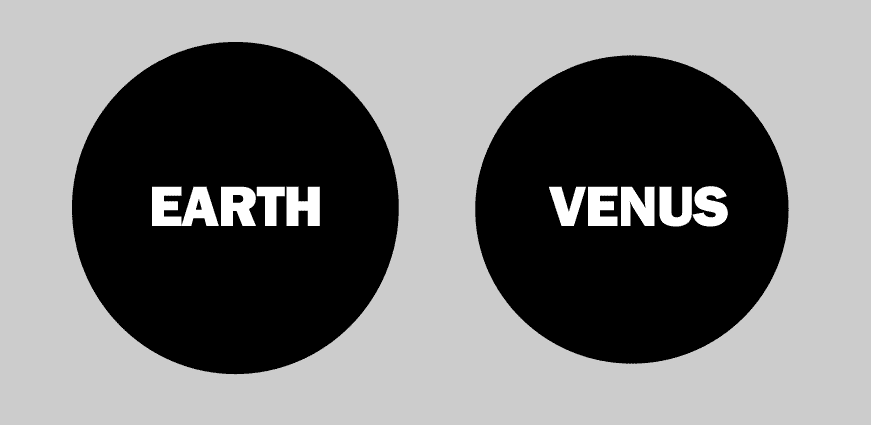VENUS
Earth - Venus Size Comparison

- Venus is the brightest object in the sky, second only to the Moon. It is the second planet from the Sun, and the sixth largest planet.
- The Romans named Venus after the goddess of love and beauty probably because it is the brightest of the planets known to the ancients. Venus was known to the Greeks as Aphrodite and to the Babylonians as Ishtar. With a few exceptions, the surface features on Venus are named for female figures.
- Venus has been known since prehistoric times. It is the brightest object in the sky except for the Sun and the Moon. Like Mercury, Venus was popularly thought to be two separate bodies, but Greek astronomers knew better.
- Since Venus is closer to the Sun than Earth, it shows phases when viewed with a telescope. Galileo's observation of this phenomenon was important evidence in favor of Copernicus's heliocentric (Sun-centered) theory of the solar system.
- The first spacecraft to visit Venus was Mariner 2 in 1962. It was then visited by more than 20 others. Other spacecraft included Pioneer Venus and the Soviet Venera 7, the first spacecraft to land on another planet, and Venera 9 which returned the first photographs of the surface. Most recently, orbiting U.S. spacecraft Magellan produced detailed maps of Venus' surface using radar.
- Venus' rotation is very slow with 243 Earth days equal to one Venus day, and Venus' year lasts almost just as long; about 225 Earth days. Also, Venus' rotation is retrograde, meaning it rotates in the opposite direction to the Earth's rotation.
- Venus is sometimes regarded as Earth's "twin" sister planet. In some ways, Earth and Venus are very similar: Venus is only slightly smaller than Earth Its diameter is equal to 95% of the size of Earth's diameter, and 80% of Earth's mass. Both have few craters indicating relatively young surfaces. Their densities and chemical compositions are also similar.
- More detailed study of Venus reveals that in many important ways it is very different from Earth: The pressure of Venus' atmosphere at the surface is 90 atmospheres, about the same as the pressure at a depth of one kilometer in the Earth's oceans. It is made mostly of carbon dioxide and sulfuric acid. These clouds completely block our view of the surface. This dense atmosphere produces a run-away greenhouse effect that raises Venus' surface temperature by about 400 degrees to over 800 degrees, which is hot enough to melt lead. Venus' surface is actually hotter than Mercury's despite being nearly twice as far from the Sun.
- Winds are strong (200 mph) at the cloud tops but at the surface they are very slow, at no more than a few miles per hour. Venus probably once had large amounts of water like Earth, but it all boiled away. Venus is now quite dry. Earth would have suffered the same fate had it been just a little closer to the Sun. We may learn a lot about Earth by learning why the basically similar Venus turned out so differently.
- Data from Magellan's imaging radar shows that much of Venus' surface is covered by lava flows. There are several large shield volcanoes (similar to Hawaii or Olympus Mons on Mars) such as Sif Mons. Venus is still volcanically active, but only in a few hot spots. For the most part, Venus been geologically quiet for the past few hundred million years.
- Venus has no small craters. It seems that small meteoroids burn up in Venus' dense atmosphere before reaching the surface. Craters on Venus seem to come in bunches indicating that large meteoroids that do reach the surface usually break up in the atmosphere. Magellan's images show a wide variety of interesting and unique features including pancake volcanoes which seem to be eruptions of very thick lava and coronae which seem to be collapsed domes over large magma chambers.
- The interior of Venus is probably very similar to that of Earth. It has an iron core about 1,865 miles in radius and a molten rocky mantle comprising the majority of the planet. Venus has no magnetic field, perhaps because of its slow rotation. Venus has no satellites. Venus is usually visible with the naked eye. Sometimes referred to as the morning star or the evening star, it is by far the brightest "star" in the sky.
BACK
RETURN TO SOLAR SYSTEM